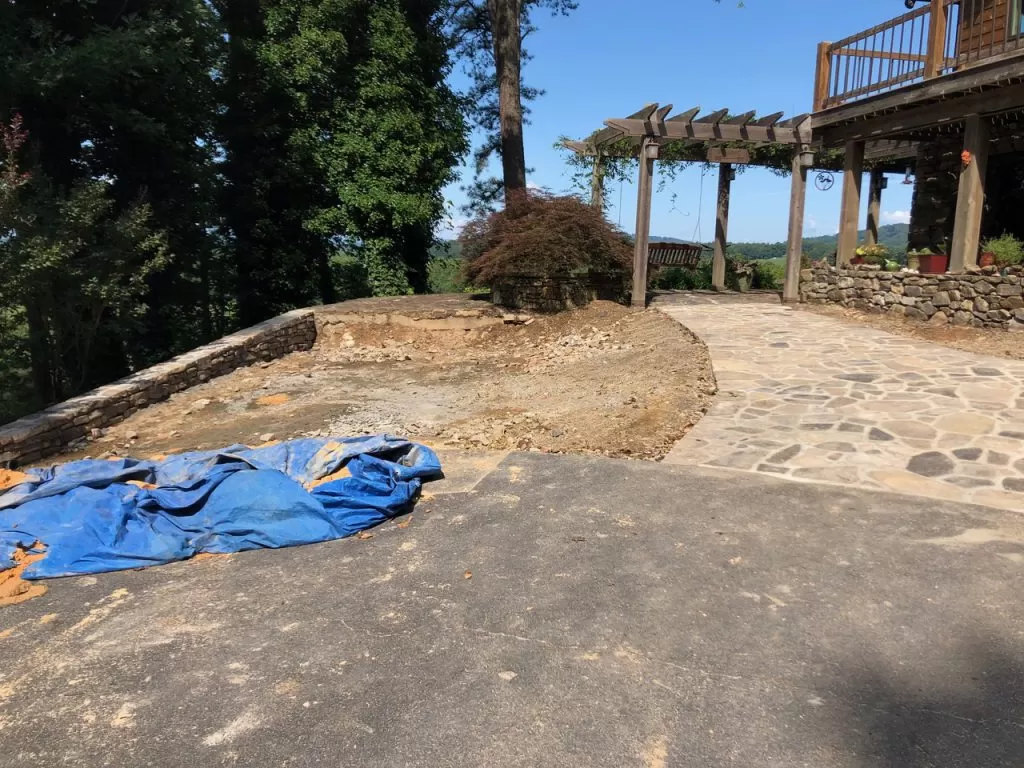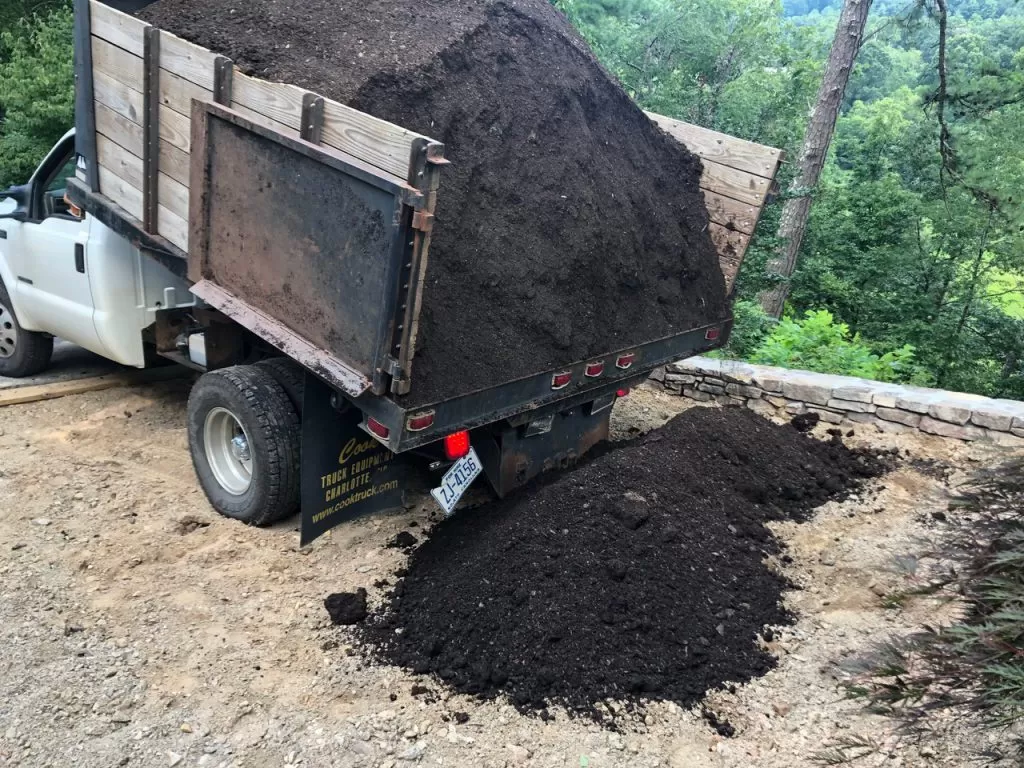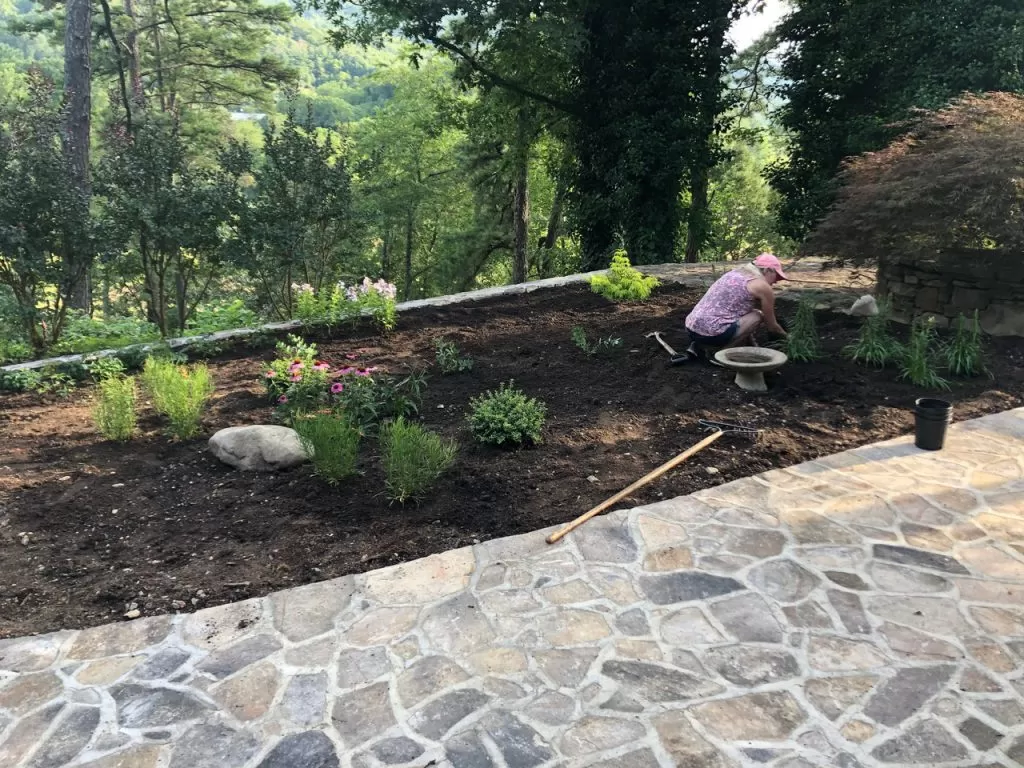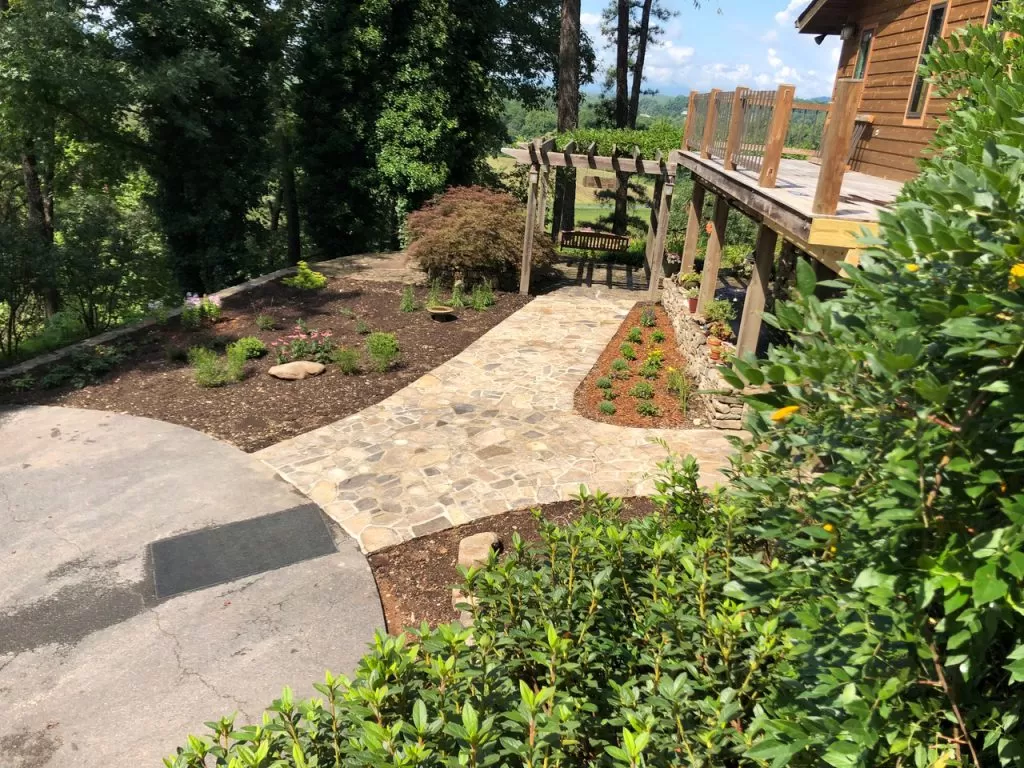Leigh Ann’s Arts and Crafts Garden
As you may recall from a recent column, when summer arrived Leigh Ann and I turned our attention from our lower level remodeling project to replacing a large section of unnecessary asphalt in front of our house with a flagstone pathway and three new planting beds.
After our family of local stonemasons – Dale, Mark, Keaton, and Andrew – completed their portion of the project, it was time to turn our attention to the preparation of the beds. As a means of explanation, I was raised in a family where you did not call in a professional until you had really screwed it up yourself. So, in prior years when Leigh Ann had announced that she needed dirt for one of her new planting beds, she had to bear with me while I drove around our North Carolina farm with my tractor looking for something that could pass for topsoil. More often than not, I came back with either a tractor scoop of clay and rocks or horse manure loaded with weeds and seeds.

As expected, beneath our asphalt driveway we discovered about twelve inches of gravel and packed dirt they had laid as a bed for the asphalt. Beneath that was more classic Carolina clay, all of which I had my neighbor dig out with his backhoe. As a result, we were faced with a rather large hole to fill with good soil. Too much, I assured Leigh Ann, for me to attempt to dig out of one of our horse pastures.

Last week, then, we drove to see Eugene at one of several mulch yards which have sprung up in our area. And as expected, what they sell as top soil in North Carolina my family in loamy Illinois would not even bother digging up or planting, let alone pay $35 a cubic yard for. But off in a corner of the lot, Eugene had a large pile of compost: rich, black, fermented cow manure and other organic ingredients ideal for Leigh Ann’s new planting beds.

Before the truck arrived with the compost, I used my tractor to bring some of the native soil we had dug out back to the beds. We then had the truck driver dump the compost on top of it and I began blending the two together with a tiller I rented from Home Depot. While tillers are always a challenge to wrestle around, it was gratifying to watch it churn the compost together with the native soil to create an ideal planting mixture for Leigh Ann.

At that point, I backed off and found another project to start, as Leigh Ann had already done her research into which plants would thrive in our climate zone with our particular amount of sunshine. Pretty soon she was placing rocks and plants in what I consider an Arts and Crafts design: informal and as natural as possible using native rather than exotic plants and shrubs. No fountains or geometric designs, no distinctly defined smaller beds within the larger bed. Just a carefully selected assortment of flowering perennials and shrubs that will provide blooms from early spring until the first frost, and enough year-round greenery to keep us satisfied until spring returns.

And while every gardener knows that no garden is ever done, Leigh Ann got off to a good start over the weekend – and is back out there every day after work!
Until next week,
“To nurture a garden is to feed not just the body, but the soul.” – Alfred Austin
Bruce
